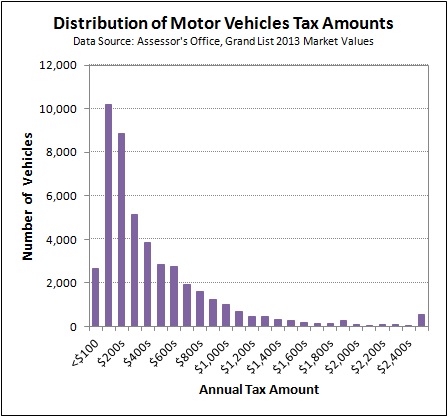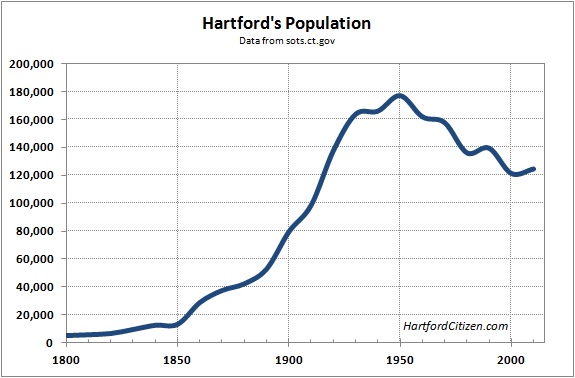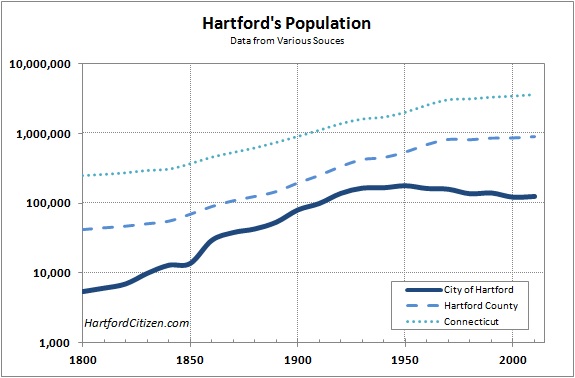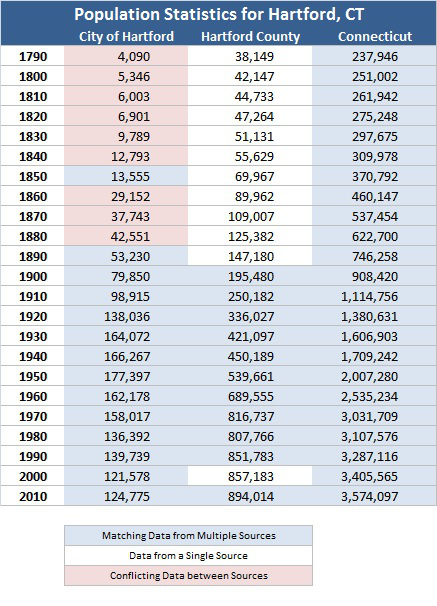On Friday, September 5, 2014 the City of Hartford posted a number of documents related to the Downtown North site and Request for Proposal (RFP). Included in the set was the RFP response from DoNo Hartford, LLC, which was the group that the administration recommended as the developer of the site.
The full document is 244 pages, and can be found here. The first 66 pages outline the proposal, while the remainder focuses on the background of the Developer and others who would be involved in the project.
Although all aspects of the proposal are interesting, the issue that is generating the most discussion is the potential cost of the development to the City of Hartford. The RFP response, though not a final agreement, provides enough detail to begin understanding potential costs. An initial read shows that the City takes on costs in a variety of ways.
Land Cost: The City would sell the land to the Developer for $1 per parcel.
Environmental Remediation: The City is responsible for any environmental remediation and/or monitoring necessary for the site.
Transportation Modifications: The City has agreed to contribute $8 million for modifications and improvements to the public right of ways – streets and sidewalks.
Infrastructure Improvement District (IID): The City would work with the Developer to establish a legal entity that would oversee the overall site, and would collect incremental property tax revenue generated by the development.
Property Tax Fixing: Property taxes on the site would be set at 5% of the gross revenue in perpetuity.
Rental Payments for the Ballpark: The City would lease the ballpark from the Developer with an annual lease payment in the vicinity of $5 million. This money pays back the Developer for the construction costs of the facility.
Ballpark Maintenance: The City would be responsible for all costs associated with the ballpark operations, maintenance, and improvements.
The RFP document estimates some, but not all, of the costs that the City will bear. Some of the costs will be more difficult to estimate than others, though there is now a more detailed framework. The RFP document makes no attempt to estimate revenues to the City.
More detail about each of the costs, and the respective page numbers in the RFP document where each cost is discussed, can be found below.
=====================================
Land Cost
Page 41, section 1 states that the ballpark parcel will be sold for $1, and page 44 section 1 states that the five other parcels will be sold for $1 each. This is an opportunity cost to the City – could the property be worth more to another developer?
Environmental Remediation
Page 41, section 4 states that the City will be responsible for all remediation and/or monitoring that may be required on the Ballpark site. Environmental costs will be factored into the Rental Payments. Page 44, section 4 states that the City will be responsible for all remediation and/or monitoring that may be required on the other parcels. The specific manner in which the City will cover those costs is not defined.
Transportation Modifications
Pages 14 and 15 discuss the changes to the City’s streets that would be made as part of the project. Paragraph 5 of page 57 states that the City will contribute $8 million towards related off-site and roadway improvements. The $8 million number is repeated in the table on page 58.
Infrastructure Improvement District (IID)
The first paragraph of page 57 notes that there will be an IID created in order to help finance the project. Paragraph 5 of page 57 states that the IID will “raise capital through a bond issue supported by a municipal tax sharing agreement.” The final paragraph of page 57 notes that the IID-related debt would be on the order of $10 million, as does the table on page 58. The costs to the City are the work to create the district, and then the foregone tax revenue that is shared with the IID.
Pages 62 and 63 provide a high level overview of how the IID would work. The IID is described as a “mini-municipality” within the City. The City and the IID would share the additional property taxes generated as a result of new development in the district. The IID would have the ability to issue debt against its share of the property tax revenue stream.
Property Tax Fixing
Page 43, section 14 states that property taxes on the parcel containing the Ballpark and the adjacent parcel that the Developer has under contract will have their taxes set to 5% of gross revenue in perpetuity. Page 45, section 8 contains similar terms for the remainder of the development site.
Rental Payments for the Ballpark
Page 34, section J introduces the idea that the City will pay rent for the stadium based on the “Guaranteed Maximum Price,” which will be set before construction begins. Page 42, section 12 defines the formula to be used for the rental payments. The City will be charged 8% of the construction costs as the initial annual rent amount. The example provided is that if the construction cost is $40 million, then the rent would be $3.2 million. However, a table on page 58 projects development costs for the ballpark to be just over $47 million.
An additional paragraph in section 12 of page 42 discusses the escalation of the rental payment over time. The paragraph is written in a confusing manner, with what appears to be an error describing the calculation. It is unclear if the rent escalation begins in year 6 of the deal, or if it begins in the first potential extension of the lease in year 26. What is clear is that the rental amount will increase by 5% over the previous period.
Ballpark Maintenance
Page 42, section 8 states that the City will rent the ballpark under a “triple-net” lease, making the City responsible for all operating and maintenance costs of the facility, including “property taxes, insurance, utilities, maintenance, repair and replacement, including roof, mechanical and structural items.” The “Lease” section of page 60, the Preliminary Financing Term Sheet for the Ballpark, states that the lease is to be triple-net as a condition for the construction loan.




